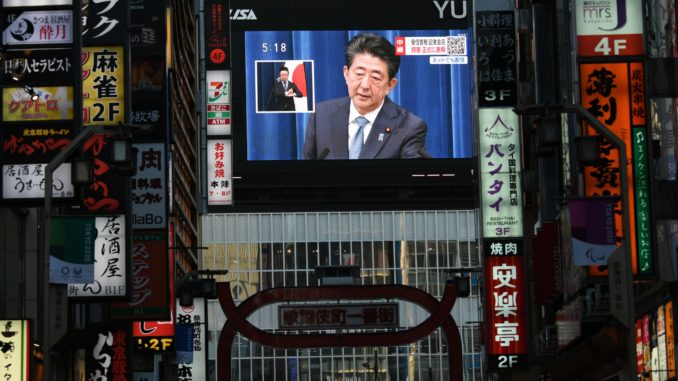
Article written by Andrew Moran via The Mises Institute
As we now enter a new chapter in Japan’s history as Yoshihide Suga takes the reigns as Japan’s new PM, we can review the economic philosophy that previous prime minister, Shinzo Abe, orchestrated during his 8 year tenure as prime minister.
“Abenomics” was a multi-pronged strategy that involved increasing Japan’s money supply, boosting government spending, and rebuilding the world’s third-largest economy to make it more competitive. Launched in 2012, Abe embarked his government on the basis of three pillars, to implement bold monetary policy, flexible fiscal policy, and a growth strategy that encourages private investment to achieve our economic goals. Essentially, Abe wanted to solve the issue of stagnation and pep up Japan.
How successful was he?
The Fruits of Abenomics
The Nikkei 225 (Japan’s main stock market index) has had a remarkable run under Abe, doubling in value since 2012. This was a result of the Bank of Japan’s (BoJ) large scale monetary easing which included sub-zero interest rates, massive asset purchases, and yield curve control. As a result, assets inflated massively while the yen weakened, which simulated exports allowing domestic Japanese firms to gain traction in foreign markets.
And what about the common population?
Though, wage growth has stagnated over the last 3 decades, as unlike its Organisation for Economic Co-operation and Development (OECD) partners, average real wages have flatlined since 1991 (even before Abe was PM). This trend has continued when Abe was in charge, despite his cabinet mandating higher salaries.
However, the most significant burden to the Japanese population will ultimately be government debt. Before the global pandemic, the prime minister did introduce a plan to organize its financial ruckus. But once COVID 19 gripped the Japanese economy, the government abandoned any fiscal responsibility it sought and instead implemented a series of exorbitant stimulus and relief packages. Right now, spending is about survival. In the future, Japan’s astronomical debt levels will hinder expansionary fiscal efforts, which may also lead to crowding out in the country’s capital markets.
Someone will have to foot this bill, and with seniors above the age of sixty-five accounting for a third of the population, this burden may fall on young professionals in the form of higher taxes.
Abenomics is here to stay
No matter who is selected to lead Japan as Abe steps down, Abenomics is here to stay. Tokyo would have no other choice but to embark upon a perpetual campaign of printing and spending money in the post-COVID 19 economy, particularly if a second wave strikes. The next leader might tinker around with altered approaches, but it will be more of the same.
Japan is currently in a recession, with debt-to GDP at 200% (!!!) and many purchasing managers’ index (PMI) readings suggesting that business activity is still contracting (covered in a previous article on S&S), Japan needs Abenomics more than ever.
Despite an early retirement, Shinzo Abe has left his mark on the Japanese economy over the past decade with his illustrious economic plans. Even as the heralded PM steps down, his policies will likely remain for years to come.
Works cited:
https://mises.org/wire/abenomics-big-debts-nothing-show-it
